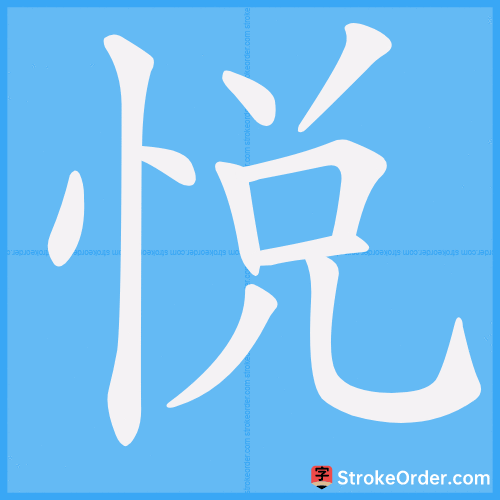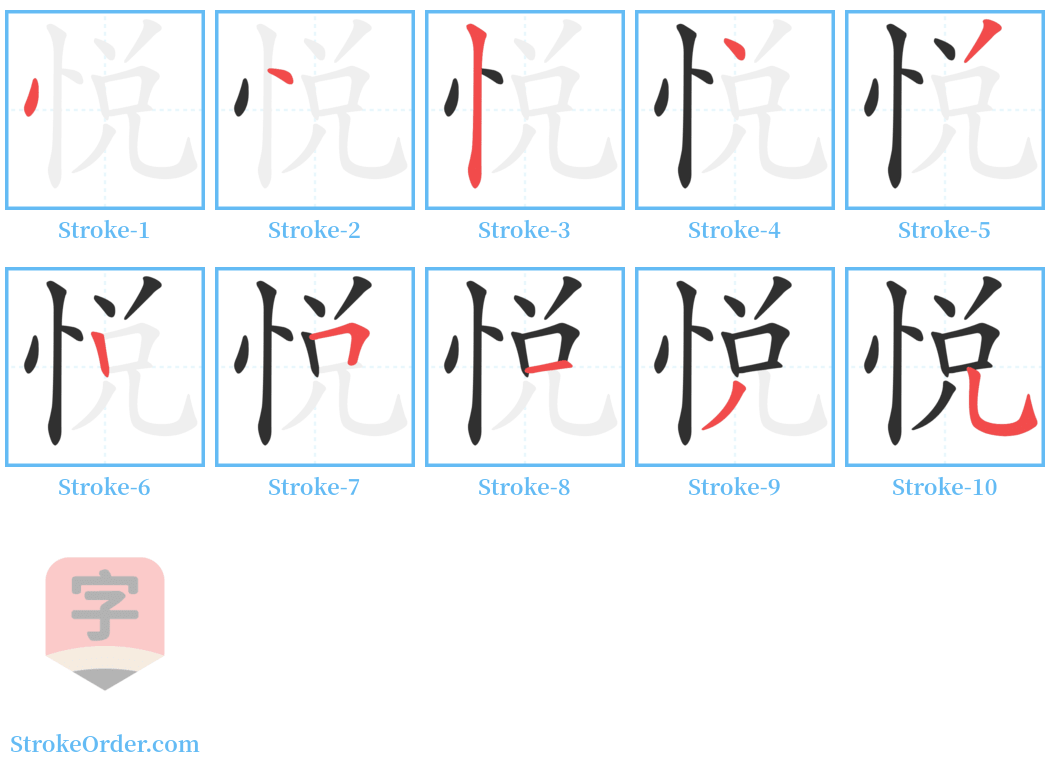悦 Stroke Order
Animated Stroke Order of 悦

Stroke Order Diagrams for 悦

Step-by-Step Handwriting Guide for 悦

Learn to Write Chinese Characters with Video Tutorials
Watch the video of writing the Chinese character "悦", learn the correct stroke order (笔顺) of the character "悦", and master the standard way of writing the character "悦".
Free Printable Handwriting Practice with Stroke Order: 悦
Printable Writing Practice Worksheet of "悦" in Portrait Orientation (Tian Zi Ge)

Printable Writing Practice Worksheet of "悦" in Landscape Orientation (Tian Zi Ge)

Information of 悦
Pinyin
yuè
Radical
忄
Strokes
10 strokes
Usage
★★★★★
Definition
pleased
悦 [yuè]
(1) Meaning: Happy, joyful.
- Examples: 喜悦 (to be delighted), 愉悦 (to be joyful), 和颜悦色 (to have a pleasant expression), 心悦诚服 (heartily admire), 取悦于人 (to please others).
(2) Meaning: To make someone happy.
- Examples: 悦耳 (pleasant to the ears), 赏心悦目 (pleasing to the eye).
(3) Meaning: A surname.
悦 [yuè]
(1) Adjective:
- Meaning: Happy, joyful (本义).
- Notes: The character is a phonetic compound, composed of 心 (heart) and a phonetic element, originally written as "说".
(2) Verb:
- (1) To submit, to heartily admire.
- (2) To like.
- (3) Examples include: 悦义 (to cherish principles), 悦慕 (to admire with affection).
- (4) To be happy to do something.
悦 [yuè]
(1) Adjective:
- Same as above regarding happiness and joy.
(2) Verb:
- (1) To submit, to heartily admire.
- Example: 服也 (to submit), as phrased in the classic expression "中心悦而诚服" (to deeply admire and submit).
- (2) To like.
- Examples: A citation from Sima Qian indicates that a person dresses for the one they admire; also, sentiments of familial affection in Tao Yuanming's work.
- (3) Again, includes terms like 悦义 and 悦慕.
- (4) To be happy to (乐于).
- Examples: To be happy to join or to serve, such as 悦附 (to cheerfully join), 悦使 (to gladly serve), etc.
Input Method for 悦
Pinyin
yue4
Wubi
nukq
Cangjie
pcru
Zhengma
uujr
Four Corner
98012
Unicode
U+60a6
Same Pronunciation Characters